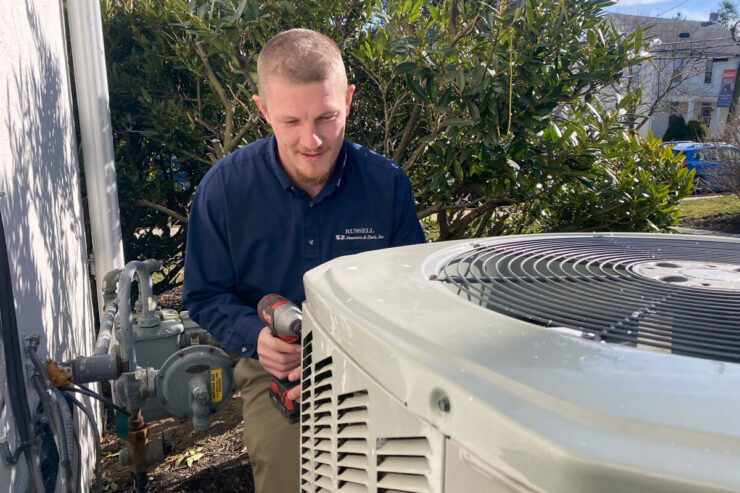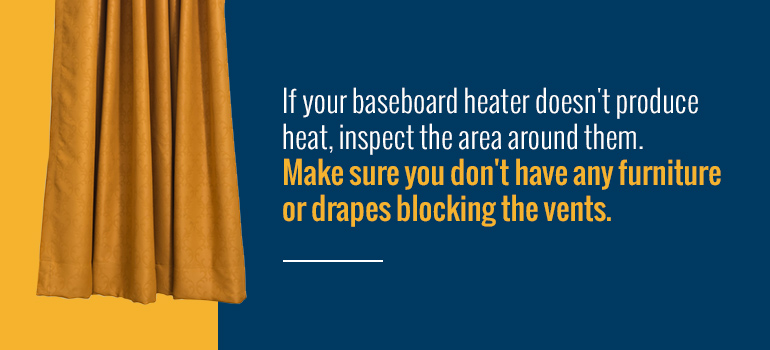The Complete Guide to Baseboard Heaters: Solving Problems Any Time of Year
March 10, 2020
Embracing Year-Round Comfort with Baseboard Heaters
As the seasons shift and the chill of the evening prompts us to reach for the thermostat, the silent sentinels against the cold – our baseboard heaters – become the unsung heroes of home comfort. Yet, when issues arise, as they sometimes do, it can turn a cozy retreat into a frigid ordeal. Understanding the nuances of your baseboard heating system, from gas-fueled serenity to electric-powered warmth, is not just about troubleshooting; it’s about maintaining an enduring sanctuary against the cold.
In this comprehensive guide, we delve into the common quandaries homeowners face with baseboard heaters, from deciphering the intricacies of gas baseboard heat to mastering the modern convenience of smart thermostats. Whether you’re facing the perplexity of a silent unit or seeking wisdom on the best smart thermostat for your baseboard heater, we have you covered. Learn how to troubleshoot electric baseboard heaters like a pro and discover how the right knowledge can transform your approach to heating – turning seasonal dread into year-long comfort.
Join us as we explore how to keep your abode’s ambiance at its peak, no matter what surprises the weather may bring. Because when it comes to your comfort, every detail counts – from the simple turn of a thermostat to the complete installation of an electric baseboard heating system.
Understanding Your Baseboard Heater
The Ins and Outs of Baseboard Heating Systems
Gas vs. Electric Baseboard Heaters: A Comparative Guide
When it comes to keeping your home toasty, the type of baseboard heater you choose can make all the difference. Gas and electric baseboard heaters offer distinct advantages and challenges, and understanding these can help you make an informed decision or manage the system you currently have in place.
How Gas Baseboard Heaters Work
Gas baseboard heaters operate by burning natural gas to produce heat. This heat is then transferred to the air in your room through convection. These units are often praised for their ability to produce a comfortable warmth quickly. However, they require a gas line to operate, which means they might not be suitable for all homes. Additionally, while gas heaters can be more cost-effective in terms of ongoing operation, especially in regions where gas is cheaper than electricity, they generally involve a more complex installation and need regular maintenance to ensure safe operation.
The Operation of Electric Baseboard Heaters
On the flip side, electric baseboard heaters generate warmth by heating up an electric coil or a fluid, like oil, inside a metal pipe that runs the length of the unit. The heated coils or fluid then radiate warmth into the room. Electric heaters are typically easier and less expensive to install than their gas counterparts and can be an excellent option for homes without existing gas lines. They are also quieter during operation and generally have lower initial costs. However, depending on your local electricity rates, they might be more expensive to run over time.
Smart Thermostat Integration
Both gas and electric baseboard heaters can be enhanced with the use of smart thermostats, which allow for more precise control of your home’s temperature and even remote adjustments via a smartphone app. A smart thermostat can help you manage energy costs more effectively, regardless of the type of baseboard heater you have.
Efficiency and Environmental Impact
Electric baseboard heaters are 100% energy efficient in terms of converting electricity into heat. However, the overall environmental impact depends on how the electricity is generated. Gas heaters, while not as efficient in terms of energy conversion, may have a lower carbon footprint if the gas is sourced responsibly.
As you evaluate your heating options or seek to understand your current system better, considering the balance between installation costs, operating expenses, and environmental impact will guide you to make choices that align with your household needs and values.

Yearly Maintenance Guide
Essential Maintenance for Optimal Performance
Keeping your baseboard heaters well-maintained is critical to ensuring they operate efficiently and effectively, especially when the temperatures dip. Regular maintenance not only extends the life of your heaters but also keeps your energy bills in check.
Cleaning and Upkeep: A Seasonal Must-Do
Dust and debris can accumulate in your baseboard heaters over time, reducing their efficiency and potentially posing a fire hazard. Before the cold season begins, take time to carefully clean the vents and interior elements of your heaters.
- Step 1: Safely Preparing for Cleaning – Ensure your heaters are turned off and completely cool. For electric heaters, it’s best to unplug them from the power source. Gas heaters should have the gas valve shut off.
- Step 2: Vacuuming the Vents – Using a vacuum with a brush attachment, gently remove dust from the outer vents. For more thorough cleaning, you can remove the front panel of most models.
- Step 3: Wiping Down the Interior – With a damp cloth, wipe the non-electrical interior parts. For gas heaters, be cautious around the burner elements. For electric, avoid any wiring or the heating element itself.
Seasonal Checks and Balancing: Tuning Up for the Chill
It’s not enough to just clean your heaters; ensuring they are in top working order before they’re called to action is equally important.
- Inspection for Damage: Look for any signs of wear or damage, such as cracks or loose connections. These can not only affect performance but also pose safety risks.
- Balancing the Heat: If you have multiple heaters in your home, ensure they’re all working in harmony. This might involve adjusting the dampers or valves to balance the heat distribution evenly throughout your home.
- Thermostat Calibration: Check your thermostats to make sure they’re accurately sensing the room temperature and communicating correctly with your heaters. A poorly calibrated thermostat can lead to overuse and increased energy bills.
By performing these tasks annually, you’re not only preventing common issues but also setting yourself up for a warm and worry-free winter. Remember, when in doubt, especially regarding gas heaters or electrical components, consulting a professional is the best course of action.

Join the Sum Zims Blue Membership today and experience the comfort of having heating experts on your side, ready to enhance the longevity and efficiency of your heaters.
Troubleshooting the Top 6 Baseboard Heater Issues
Solving Common Baseboard Heater Challenges
A well-maintained baseboard heater is typically reliable, but like all appliances, it can encounter issues. Here’s how to troubleshoot some of the most common problems homeowners face with their baseboard heaters, ensuring they can be addressed quickly and effectively.
1. Troubleshooting Electric Baseboard Heaters
Electric baseboard heaters are relatively straightforward in their operation, but when they falter, here’s how to get to the root of the issue:
- The Heater Won’t Turn On: Check the circuit breaker and the thermostat. If the thermostat is set correctly and the breaker hasn’t tripped, inspect the heater for any loose connections or damage to the heating element.
- Inadequate Heat: If the heater is on but not providing enough warmth, ensure that it’s not being obstructed by furniture and that the vents are clean. Also, verify that the unit’s size is adequate for the room.
- Overheating: Should the heater become too hot, it could be a sign of restricted airflow or an internal fault. After turning off the heater, clear any blockages and consider seeking professional help if the problem persists.
2. When the Heat Doesn’t Flow
Sometimes the issue isn’t electrical but a matter of flow and distribution:
- Uneven Heating: If certain areas of your room are colder than others, this may indicate an issue with the heater’s internal fins or the room’s natural airflow. Adjusting the fins or using fans to circulate air can help.
- Thermostat Issues: A malfunctioning thermostat can lead to no heat production. Test the thermostat’s functionality by raising the set temperature to see if it kicks the heater on.
- Noise Problems: Popping or cracking noises are often caused by the natural expansion and contraction of the heater’s parts as they warm up and cool down. However, loud or persistent noises might suggest an internal fault that requires attention.
3. The Baseboard Heater Works for a Couple of Minutes Before the Circuit Breaker Trips
If you replace your heater or circuit breaker, you need to adjust your electrical system. Call a technician to inspect your circuit breaker and thermostat.
- How to inspect your circuit breaker: If your circuit breaker feels hot, check the label to find out the circuit breaker’s total amperage load. Most circuit breakers are either 20-amp or 30-amp for a baseboard heater, depending on the heater’s wattage. Your circuit breaker should have high enough amperage rating to handle the electrical load of the heater as well as anything else on the circuit, such as the room’s wall outlets. If the load rating is sufficient, inspect the system for loose connections.
- How to fix your circuit breaker: Turn off the electricity at the circuit breaker and wait for it to cool. Once the circuit breaker is cool, replace it with the size listed by the manufacturer.
If your baseboard heater runs for a while then shuts off without tripping the circuit, you may have a defective thermostat. Test it by setting a higher temperature. You will need to replace your thermostat if there are any problems with its wiring or function.
4. The Baseboard Heater Won’t Turn On
If your baseboard heater doesn’t produce heat, inspect the area around them. Make sure you don’t have any furniture or drapes blocking the vents. Check the thermostat to ensure the heat is on and set to the correct temperature.

- How to inspect your ineffective heater: Clear the vents from pieces of furniture or children’s toys. If your heater doesn’t produce heat after a couple of minutes, check the electrical system. Tripped breakers are a common problem with baseboard heaters. Inspect the valves inside the heater. Valves may corrode and stick together without proper lubrication, preventing heat from getting into the room.
- How to fix the vents and prevent further damage: If an object blocked the vents, be more conscious about keeping objects away from the heater. If it’s an electrical issue, replace the fuse in the breaker box. You should also lubricate the valves into the baseboard heater to prevent corrosion.
5. The Baseboard Heater Won’t Turn Off
A baseboard heater that’s running nonstop is a sign of a faulty thermostat. A malfunctioning thermostat could increase your energy bills. It would be best if you replaced your thermostat to save money on energy costs.
- How to inspect your thermostat: Make sure the thermostat is at the correct temperature. Lower the temperature and wait for the baseboard heater to turn off. If the heat persists, you might have a blocked contact in your thermostat.
- How to fix a faulty thermostat: Tapping the thermostat may clear the blocked contact for a temporary fix. You will need to replace the thermostat to make sure the baseboard heater functions properly. Inspect your thermostat often to detect any damage before you have problems with your baseboard heater.
6. The Baseboard Heater Produces a Burning Odor While Running
As the baseboard heater produces heat, you might smell something burning. Often, the smell is from burning lubricant or dust that has collected on the vents. Improper cleaning of your baseboard heater can damage the heater. If it’s an issue with something burning, the baseboard heater could be sending harmful chemicals into the air.
- How to check your baseboard heater: If you smell an unpleasant odor while your baseboard heater is running, turn off the heater. Wait for the heater to cool, then wipe the vents clean with a damp cloth. Turn the heater back on and call a technician if the smell persists.
- How to prevent smells from a baseboard heater: Clean your heater after each use to prevent dust buildup. If the smell persists, you might need to replace it. Make sure your carbon monoxide detector is functioning in your home. Carbon monoxide poisoning is unlikely if an electric heater is working properly. However, if a heater is burning chemicals or debris, it could produce carbon monoxide.

Embracing the Warmth, Avoiding the Worry
When the days get shorter and the air cooler, the silent hum of a baseboard heater is a welcome sound in any home. We’ve walked through the how-tos of baseboard heater functionality, from understanding the differences between gas and electric models to tackling the most common troubleshooting issues. Armed with this knowledge, you’re now better equipped to ensure that your home remains a haven of warmth and comfort, regardless of what the weather outside may bring.
Remember, regular maintenance is not just a chore; it’s an investment in the longevity and efficiency of your heating system. By following our yearly maintenance guide, you can prevent the majority of issues before they start. And for those times when problems do arise, our troubleshooting guide provides you with the tools and knowledge to fix the issue swiftly and safely.
But when maintenance checks and troubleshooting aren’t enough, or if you prefer the assurance of professional support, Sum Zims is here to help. With our Blue Membership Plans, you gain the peace of mind that comes with priority service, regular maintenance, and the expertise of HVAC professionals who are just a call away.
Stay warm and worry-free with Sum Zims Blue Membership Plans. Sign up today and let us take the chill out of your heater hassles.